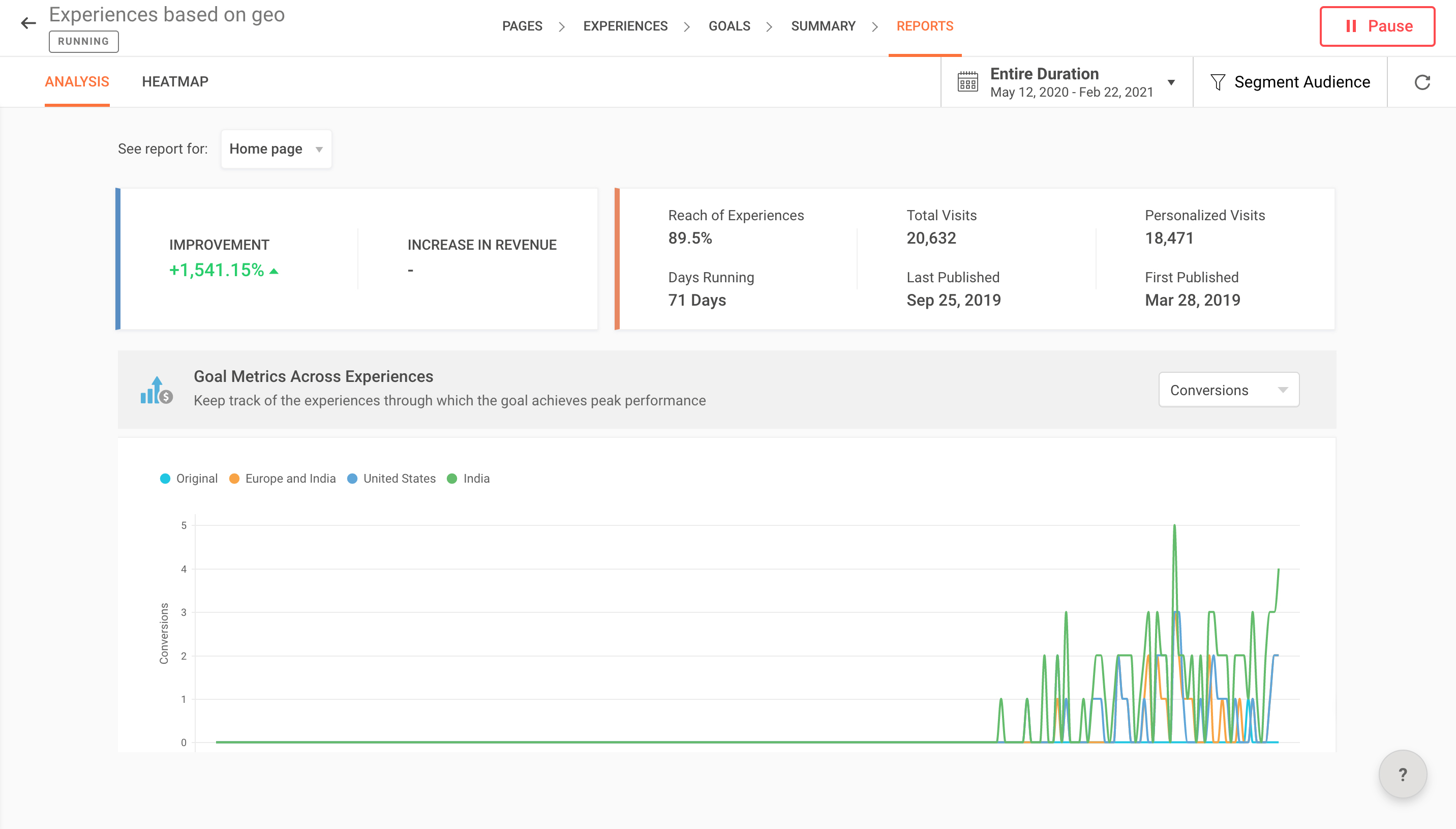
Customers love a personalized website experience and brands are leveraging this via contextual marketing to create relevancy and boost loyalty. The art of tailoring a website based on visitor preferences is called website personalization.
Here's an illustration. A personalized experience is when you walk into a small cafe after a few days and the waiter remembers your previous order customizations, your preferred seat, and your favorite magazine and offers all these without you having to ask. This gives a personal touch to the customer experience.
Personalization involves analyzing customer information—including their demographics, interests, and behaviors—to help you create and deliver campaigns, content, and experiences that resonate with your target audience.
Top three benefits of website personalization
- You understand your audience better because you don't have to rely too much on your gut when tailoring your website. Website personalization starts with collecting data to understand what buyers are looking for. This data could include your audience's overall demographic profile, what device do they use to visit your website, and how much time they spend on your page. To know your customers' decision-making processes and your target audience, you need to get your hands on these metrics.
- You achieve faster conversions because personalizing your web pages helps the customer avoid a lengthy search process. Making it easier for them to get what they're seeking as soon as they arrive is a great way to increase customer happiness.
- You lower bounce rates because of increased website engagement and conversions. A lower bounce rate can help websites make their way to the top of search engines, thereby increasing the chances of getting discovered through organic search.
How does personalization work with Zoho PageSense?
Step 1: Target
Enter the URL of the web page you want to personalize for your visitors. Through PageSense's advanced URL targeting option, you can also run your personalization test on a group of web pages instead of the entire website.
Step 2: Experience
Choose a specific group of visitors for whom you want to run this experiment. You can either customize your own set of segments or choose from our existing predefined segments. For example, if you want to create an experience for your returning visitors, you can select returning visitors from the predefined audience segments.
You can also offer unique personalized experiences for users from different devices—i.e., mobile/tablet/desktop—through our visual editor. This allows you to create as many experiences as you want with zero design or development skills. In addition, you can redirect your audience to a page that you've already designed.
Step 3: Goals
Set and measure goals that you want your visitors to achieve on the website. Whether it's a link click or a specific custom action like "purchase," see which experience drives visitors to perform the desired actions on a page.
Step 4: Launch
Once you launch your experiment, PageSense automatically generates two types of reports—Heatmap and Analysis—where you can study your visitors' behavior and actions. Through Heatmap, you can see how visitors interact with each element, including drop-down menus, navigation bars, images, and content on a page. Through Analysis, you can summarize the personalization reports across different experiences, audience segments, and various other metrics.
Step 5: Compare
Once you create multiple experiments, you can compare how they perform in terms of reach, visits, conversion rates, and an overall improvement in revenue.
By implementing personalization, you can take advantage of your existing traffic and convert your website visitors into customers! When you treat your customers as individuals, you'll find they're much more likely to return and make repeat purchases.
If you have any questions or concerns, feel free to reach us at support@zohopagesense.com. We're always happy to help!



Comments